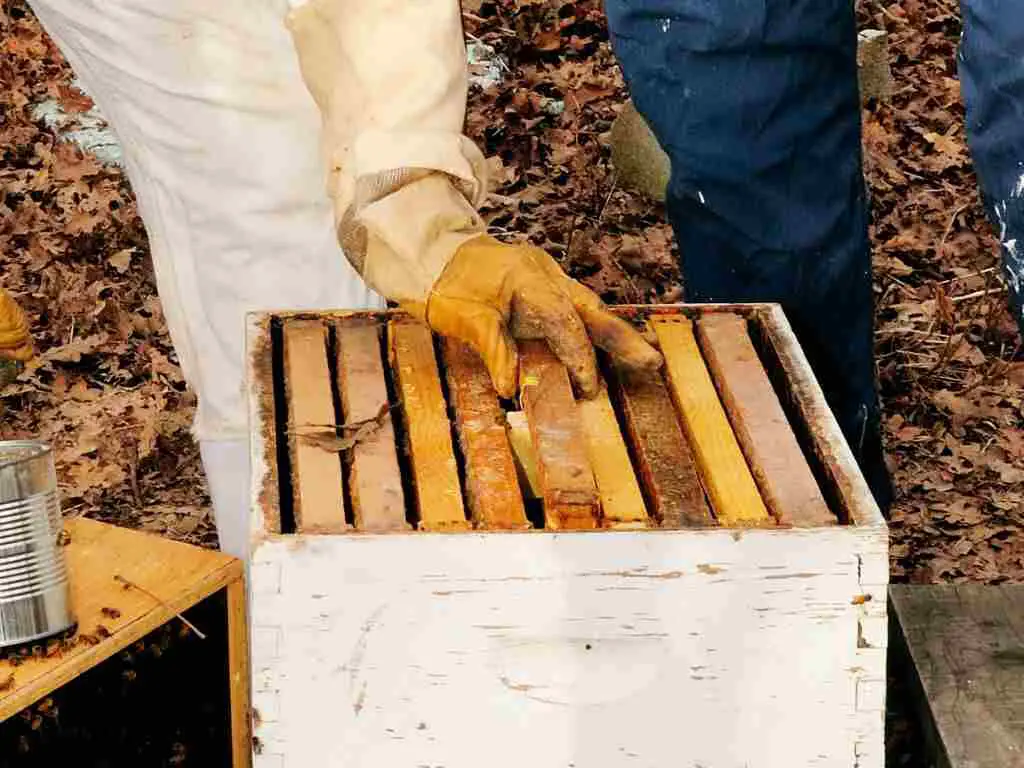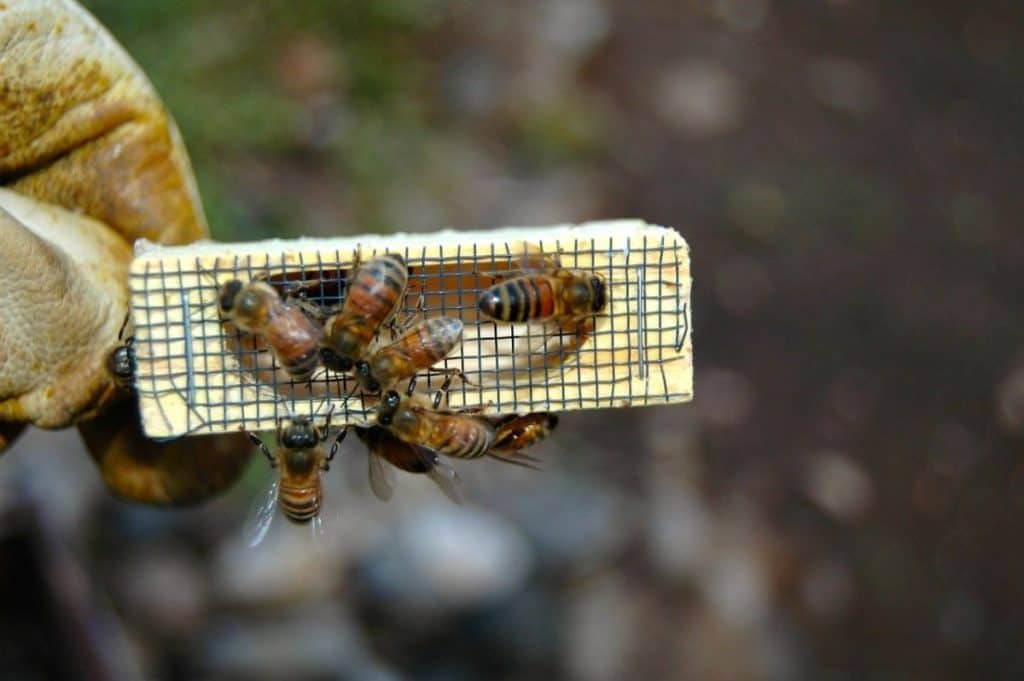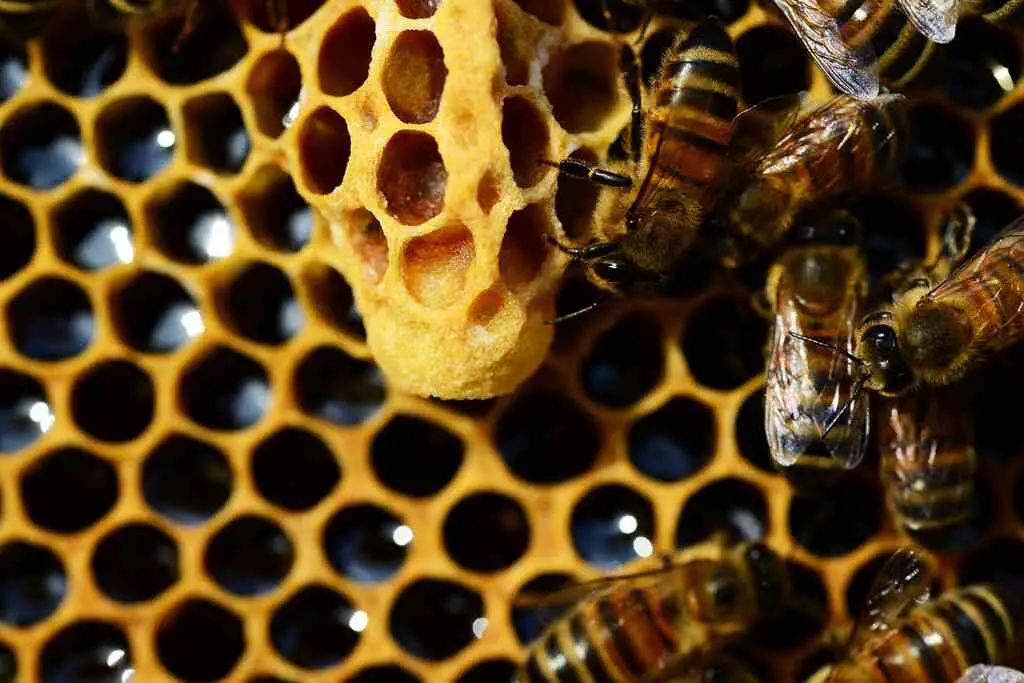Requeening is an important process that beekeepers normally do. In this article, I’ll tell you all you need to know about requeening.
What is Requeen?
Requeening is a process where beekeepers introduce a new queen into a bee colony to replace the old one. The aim of requeening is to obtain a stronger and desirable colony. Because the new queen is unrelated to the colony, she needs to be fit enough to exert full control over the colony.

Why is Requeening Required?
Requeening is not a compulsory process in beekeeping. But, why are beekeepers doing it?
The main reason for requeening is to replace the old, less fertile queen, so that the colony remains productive. As the queen ages, her fertility inevitably drops. She produces fewer eggs, and the colony either stops growing or starts shrinking. Replacing the old queen with a young, healthy one can resolve this issue quickly.
Another reason to replace the queen is to fight diseases. When a queen is infected by diseases that can not be easily cured by medication, replacing her with a healthier queen is often the only option.
Requeening is also required if the queen dies without leaving any eggs. Without a queen, the bee colony will soon collapse. If there are viable eggs in the hive, the colony can still rear a new queen. But, if there aren’t any eggs left, you will have to manually requeen the colony.
Lastly, requeening is done to improve the genetics of the bees. Traits such as temperament and hygienic behaviors of a bee colony can be improved by replacing the queen with such qualities. Obviously, it takes time for the new bees to replace all the old ones in the colony.
Commercial beekeepers prefer to replace the queen by themselves because it is faster that way. Moreover, doing it manually guarantees a fertile queen is introduced, and minimizes the disruptions that may happen to the colony.
Best Time to Requeen a Bee Colony
The best time to requeen a colony is at the end of the nectar flow. This is when the bee colony is not too busy, and causes the least disruptions to honey production.
If the new queen is introduced in fall, by the time spring starts, a big portion of your colony should have been replaced by the offspring of the new queen. You can start reaping the benefit of requeening immediately in the new year.
How to Requeen the Bee Colony?

To get a new queen, order the desired queen stock. The queen will be delivered in a queen cage sealed with a candy plug.
To requeen the hive, remove the old queen from the hive one day ahead if she is still there. Take out 1 frame from the hive body to make space so that you can hang the queen cage between frames. Make sure the candy plug in the queen cage is exposed. Leave the new queen there for a week.
As the new queen is in the hive, she tries to exert control over the colony. Since she is protected in the queen cage, the queen has plenty of time trying to do that without the risk of being attacked by the bee workers.
In the meantime, the bees will slowly consume the exposed candy plug, and release the new queen. By the time the queen leaves her cage, she should have full control over the colony.
Remove the queen cage and reinsert the removed frame after the queen has left the queen cage. Remember to clear the burr combs built around the queen cage.
Check whether your new queen is healthy and laying eggs. And don’t forget to remove those supersedure cells that your bees might have built in the absence of the old queen.
Can I Requeen using a Different Bee Stock?
You can requeen using a closely-related bee stocks. Bees tend to reject queens from unrelated stocks, but you can improve the acceptance by leaving the new queen in the hive for a few days before exposing the candy plug. That gives her more time to control the colony. Bees cannot be requeened using a different subspecies.
How often should I Requeen My Bees?
Commercial beekeepers tend to requeen their hives on a predefined interval, which can be one to three years. Backyard beekeepers or hobbyists only need to requeen their colonies if the queen is sick, dead, or if the genetics of the colony need to be improved.
Naturally, a bee colony can handle a loss queen crisis by raising a new queen, if there are eggs available. However, raising a new queen is a long process, and it takes up to a year for your colony to get back on track.

Moreover, the beehive may raise multiple queens who rally their supporters to fight for the throne. This is bad for productivity.
A queenless colony becomes very unproductive. Commercial beekeepers do not have the luxury to wait for the bee colony to replace its queen by itself because a lower productivity means lower income. Hence, commercial beekeepers always resort to requeening.
For backyard beekeepers who are not too concerned about honey production, letting nature take its course is a good option. But, you have to make sure there are eggs in the hive, because only eggs (and not larvae or pupae) can be reared into queens.


